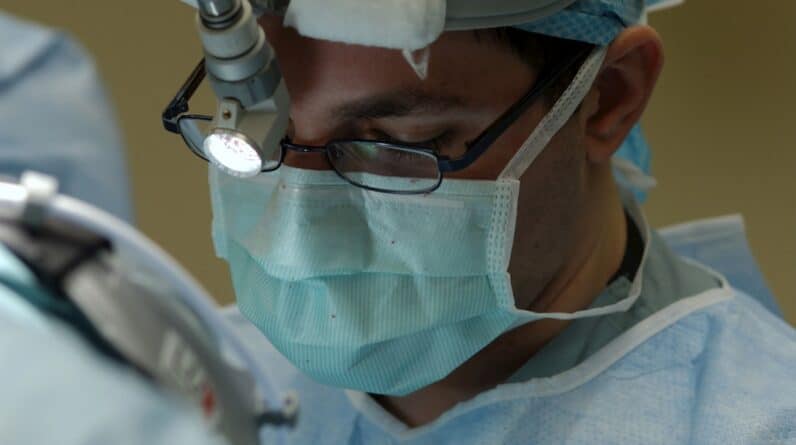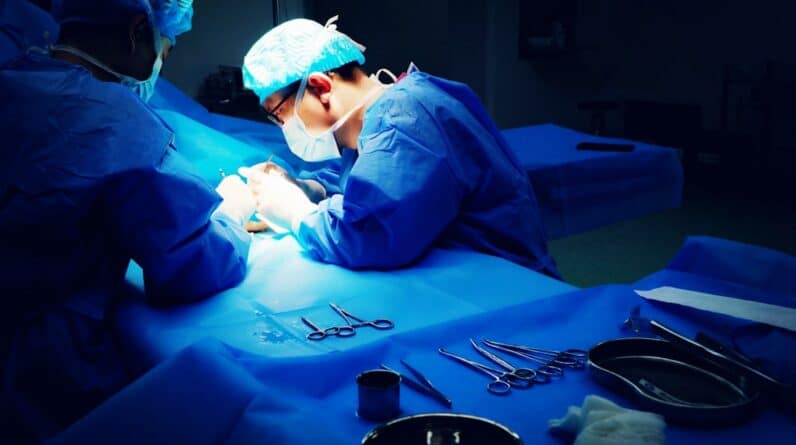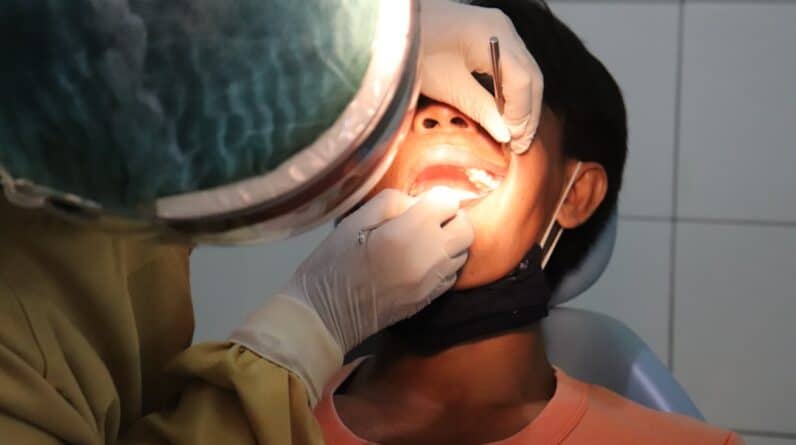What is Lasik Surgery, and How Does It Work to Correct Vision?
Lasik surgery has revolutionized the way people approach vision correction. If you’ve ever found yourself squinting at a distant sign or fumbling for your glasses in the morning, you may have considered this procedure as a solution. Short for “Laser-Assisted In Situ Keratomileusis,” Lasik is a popular refractive surgery designed to reduce or eliminate dependence on glasses and contact lenses.
With millions of successful procedures performed worldwide, it’s no wonder that Lasik has become a household name in the realm of eye care. As you delve deeper into the world of Lasik, you’ll discover that it’s not just a quick fix; it’s a sophisticated procedure that combines advanced technology with a deep understanding of ocular anatomy. The allure of waking up with clear vision is compelling, but it’s essential to understand what the surgery entails, how it works, and what you can expect before and after the procedure.
This article aims to provide you with a comprehensive overview of Lasik surgery, helping you make an informed decision about whether it’s the right choice for you.
Key Takeaways
- Lasik surgery is a popular vision correction procedure that uses a laser to reshape the cornea and improve vision.
- Understanding the anatomy of the eye, including the cornea, retina, and lens, is important in understanding how Lasik surgery works.
- The process of Lasik surgery involves creating a thin flap in the cornea, reshaping the underlying tissue with a laser, and repositioning the flap.
- Before Lasik surgery, patients need to undergo a comprehensive eye exam and follow specific pre-operative instructions to ensure a successful procedure.
- The role of the laser in correcting vision during Lasik surgery is to precisely reshape the cornea to correct refractive errors such as nearsightedness, farsightedness, and astigmatism.
Understanding the Anatomy of the Eye
The Eye’s Focusing Mechanism
Your eye functions much like a camera, with various components working together to focus light and create clear images. The cornea, the transparent front part of your eye, plays a vital role in this process. It bends light rays as they enter your eye, directing them toward the retina at the back of your eye, where images are formed.
Other Key Structures
In addition to the cornea, other structures such as the lens, iris, and retina contribute to your overall vision. The lens further refines the focus of light onto the retina, while the iris controls the amount of light that enters the eye.
Refractive Errors and Lasik Surgery
Any irregularities in these structures can lead to refractive errors like myopia (nearsightedness), hyperopia (farsightedness), or astigmatism. Understanding these components will help you grasp how Lasik surgery aims to correct these issues by reshaping the cornea to improve light focus.
The Process of Lasik Surgery
The Lasik procedure itself is relatively quick and straightforward, typically lasting only about 15 minutes per eye. When you arrive at the surgical center, you’ll be greeted by a team of professionals who will guide you through each step of the process. After administering numbing eye drops to ensure your comfort, your surgeon will create a thin flap in the cornea using either a microkeratome or a femtosecond laser.
Once the flap is created, your surgeon will gently lift it to expose the underlying corneal tissue. At this point, an excimer laser is used to reshape the cornea by removing microscopic amounts of tissue. This reshaping allows light to be focused more accurately onto the retina, correcting your specific refractive error.
After the laser treatment is complete, the corneal flap is repositioned, where it naturally adheres without the need for stitches.
Preparing for Lasik Surgery
Preparation for Lasik surgery is an essential step that can significantly impact your experience and outcomes. Before undergoing the procedure, you’ll need to schedule a comprehensive eye examination with your ophthalmologist. This evaluation will assess your overall eye health and determine whether you are a suitable candidate for Lasik.
During this visit, your doctor will measure your corneal thickness, evaluate your refractive error, and check for any underlying conditions that could affect your surgery. In the days leading up to your surgery, there are several important guidelines to follow. You should avoid wearing contact lenses for a specified period before your procedure, as they can alter the shape of your cornea.
Additionally, it’s advisable to refrain from using makeup or lotions around your eyes on the day of surgery to minimize any risk of infection. By taking these preparatory steps seriously, you can help ensure a smoother surgical experience and better results.
The Role of the Laser in Correcting Vision
The laser technology used in Lasik surgery is one of its most remarkable features. The excimer laser is specifically designed for precision and accuracy in reshaping the cornea. Unlike traditional surgical methods that involve cutting and stitching, lasers offer a minimally invasive approach that reduces recovery time and enhances safety.
The laser operates by emitting pulses of ultraviolet light that precisely remove corneal tissue without damaging surrounding areas. This precision is crucial because even minor errors in corneal reshaping can lead to suboptimal vision outcomes. The laser can be programmed to address individual refractive errors based on preoperative measurements taken during your eye exam.
This customization ensures that each treatment is tailored specifically to your unique vision needs, making Lasik one of the most effective options for vision correction available today.
Potential Risks and Complications of Lasik Surgery
While Lasik surgery boasts high success rates and patient satisfaction, it’s essential to be aware of potential risks and complications associated with the procedure. As with any surgical intervention, there are inherent risks involved. Some patients may experience temporary side effects such as dry eyes, glare, halos around lights, or fluctuating vision during the initial recovery period.
These symptoms often resolve on their own but can be bothersome for some individuals. In rare cases, more serious complications can occur, such as undercorrection or overcorrection of vision, which may necessitate additional procedures or enhancements. Additionally, some patients may develop conditions like ectasia, where the cornea becomes too thin or weak after surgery.
It’s crucial to discuss these risks with your surgeon during your consultation so that you can make an informed decision about whether Lasik is right for you.
Recovery and Aftercare Following Lasik Surgery
Recovery after Lasik surgery is typically swift and straightforward. Most patients notice an immediate improvement in their vision within hours after the procedure. However, it’s essential to follow your surgeon’s aftercare instructions carefully to ensure optimal healing and results.
You may be advised to rest your eyes for a few hours post-surgery and avoid strenuous activities for at least a week. During your recovery period, you’ll likely be prescribed antibiotic and anti-inflammatory eye drops to prevent infection and reduce inflammation. It’s also important to avoid rubbing your eyes or exposing them to irritants like smoke or dust during this time.
Regular follow-up appointments with your surgeon will help monitor your healing progress and address any concerns that may arise.
Expected Results and Success Rates of Lasik Surgery
The expected results from Lasik surgery are generally very positive, with many patients achieving 20/25 vision or better after their procedure. Success rates vary depending on individual factors such as age, overall eye health, and the severity of refractive errors prior to surgery. However, studies show that over 95% of patients are satisfied with their vision correction results.
It’s important to have realistic expectations going into the procedure. While many people achieve excellent vision without glasses or contacts post-surgery, some may still require corrective lenses for specific tasks like reading or driving at night. Discussing your goals and expectations with your surgeon will help ensure that you have a clear understanding of what Lasik can achieve for you.
Comparing Lasik Surgery to Other Vision Correction Procedures
When considering vision correction options, it’s essential to compare Lasik surgery with other procedures available today. Alternatives such as PRK (Photorefractive Keratectomy) and implantable contact lenses (ICLs) offer different benefits and drawbacks depending on individual needs. PRK is similar to Lasik but involves removing the outer layer of the cornea instead of creating a flap; this may be preferable for patients with thinner corneas.
Implantable contact lenses provide another option for those who may not be suitable candidates for Lasik due to high refractive errors or other factors. These lenses are surgically placed inside the eye and can be removed if necessary. Each option has its own set of advantages and disadvantages; therefore, discussing these alternatives with your eye care professional will help you make an informed choice based on your specific circumstances.
Who is a Good Candidate for Lasik Surgery
Determining whether you are a good candidate for Lasik surgery involves several factors that your ophthalmologist will evaluate during your consultation. Generally speaking, ideal candidates are over 18 years old with stable vision prescriptions for at least one year prior to surgery. Additionally, individuals should have healthy eyes free from conditions such as cataracts or severe dry eye syndrome.
Certain lifestyle factors may also influence candidacy; for instance, if you engage in activities that pose a risk of eye injury or if you have specific occupations requiring optimal vision under various conditions, these considerations will be taken into account during your evaluation process. Ultimately, a thorough assessment by an experienced eye care professional will help determine if Lasik is right for you.
The Future of Lasik Surgery and Advancements in Vision Correction Technology
As technology continues to advance at an unprecedented pace, so too does the field of vision correction surgery. The future of Lasik looks promising with ongoing research aimed at improving techniques and outcomes even further. Innovations such as wavefront-guided lasers allow for more personalized treatments by mapping out unique imperfections in each patient’s eyes.
Moreover, advancements in post-operative care and monitoring are enhancing patient experiences and satisfaction rates following surgery. As more people seek alternatives to glasses and contact lenses, it’s likely that Lasik will remain at the forefront of vision correction options for years to come. By staying informed about these developments and understanding what they mean for potential candidates like yourself, you can make empowered decisions regarding your vision health moving forward.
FAQs
What is Lasik Surgery?
Lasik surgery is a type of refractive surgery used to correct vision problems such as nearsightedness, farsightedness, and astigmatism. It is a popular procedure that uses a laser to reshape the cornea, allowing light to be properly focused onto the retina.
How does Lasik Surgery work to correct vision?
During Lasik surgery, a thin flap is created on the surface of the cornea. The flap is then lifted, and a laser is used to reshape the underlying corneal tissue. This reshaping allows the cornea to properly focus light onto the retina, resulting in improved vision.
Is Lasik Surgery safe?
Lasik surgery is considered to be a safe and effective procedure for the majority of patients. However, as with any surgical procedure, there are potential risks and complications. It is important to consult with a qualified ophthalmologist to determine if Lasik surgery is a suitable option for your individual case.
What are the potential side effects of Lasik Surgery?
Some potential side effects of Lasik surgery may include dry eyes, glare, halos, and difficulty with night vision. These side effects are usually temporary and improve over time. In rare cases, more serious complications such as infection or overcorrection may occur.
Who is a good candidate for Lasik Surgery?
Good candidates for Lasik surgery are typically over 18 years of age, have stable vision for at least a year, and have healthy eyes with no underlying conditions such as cataracts or glaucoma. A comprehensive eye examination by an ophthalmologist can determine if someone is a suitable candidate for Lasik surgery.









